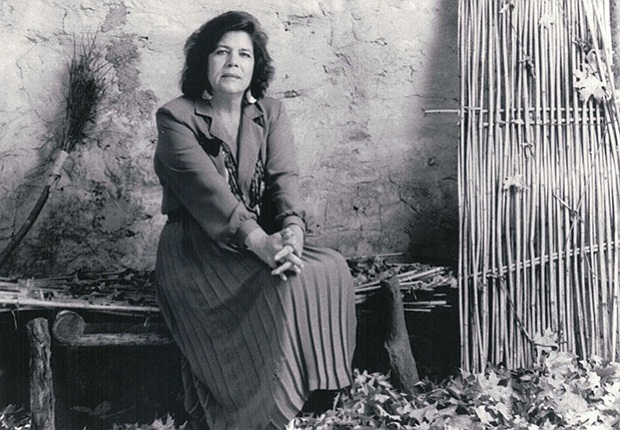
A memorial service for Chief Wilma Mankiller was held today at the Cherokee Nation Cultural Grounds in Tahlequah, Oklahoma. She died earlier this week at the age of 64 after a bout of pancreatic cancer.
While she was born in the Cherokee Nation in Oklahoma, she spent her childhood in San Francisco. During the 1950s, the United States government followed a policy of relocation for American Indians. Under this policy, Indians were relocated from their reservations to distant cities. Relocation was based on the reasoning that there was little work for Indians on the reservation and therefore the solution was to simply relocate the Indians to the cities. Relocation was often brutal: Indians were told that all services for them on the reservation-health care, commodities, education-were being terminated and that they had to move to the cities. They were then given a one-way bus ticket to the city.
In 1969, she was among a group of young Indian militants who called themselves “Indians of All Tribes” who occupied the abandoned Alcatraz Island prison to protest Indian conditions. In a proclamation to the “Great White Father” they informed the government that they had reclaimed the island by right of discovery and that they were willing to pay a fair price ($24) for it. The price offered was $1.50 per acre which was more than the 47 cents per acre which the government was currently offering California Indians for their lands under the Claims Commission Act. Under the terms of the 1868 Fort Laramie Treaty, male Indian adults whose tribes are a party to this treaty are allowed to file for a homestead on abandoned federal lands. Alcatraz was abandoned by the federal government in 1963.
In her autobiography, she ends the chapter about Alcatraz by simply stating:
The name of the island is Alcatraz. It changed me forever.
She also writes:
It was on Alcatraz, the irregular oblong hump of barren sandstone stuck in the bay waters between San Francisco and Sausalito, where at long last some Native Americans, including me, truly began to regain our balance.
She returned home to the Cherokee Nation in 1977. She went to work for the tribe as an economic stimulus coordinator. She writes about her entry into tribal government:
The tribal power base was dominated by men, but it was refreshing to see that at least a rebirth of our government, which the federal government had tried to suppress for seventy years, was in full swing.
In 1981 she became the first director of the Cherokee Nation Community Development Department. In 1983, Ross Swimmer asked her to run as his deputy in the election for Principal Chief. Swimmer was known as a Republican. She notes:
He must have forgotten that I am also a liberal Democrat.
In 1985, Ross Swimmer was selected by President Ronald Reagan to become the Assistant Secretary of the Interior for Indian Affairs. With this move, Wilma Mankiller became the Principal Chief of the Cherokee Nation. After completing Swimmer’s term as Chief, she ran for the office herself and became elected Principal Chief in 1987.
Under the guidance of Chief Mankiller, the Cherokee Nation tripled its enrollment, doubled its employment, and built new health centers and children’s programs.
In 1998, she was awarded the Presidential Medal of Freedom by President Clinton. This is the highest honor given civilians in the United States.
Current Cherokee Chief Chad Smith stated:
http://news.yahoo.com/s/ap/201…
“She was such a monumental leader in Indian Country and certainly within the Cherokee Nation because, ironically or perhaps appropriately, she was so humble.”
Leave a Reply